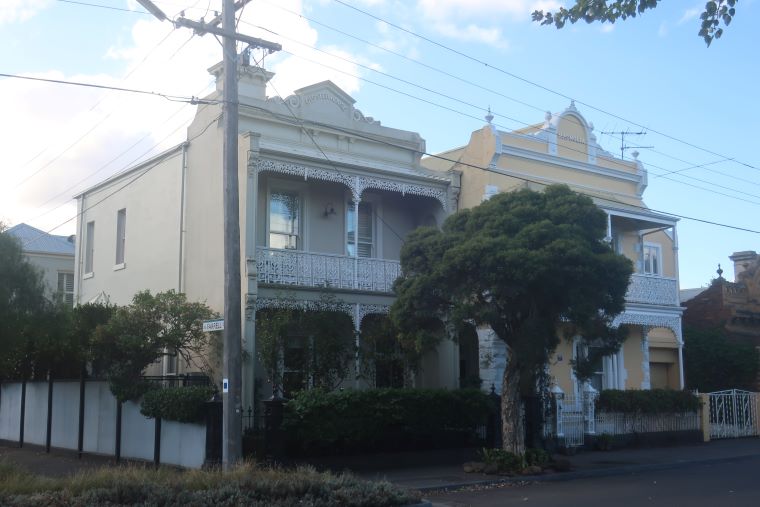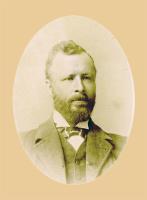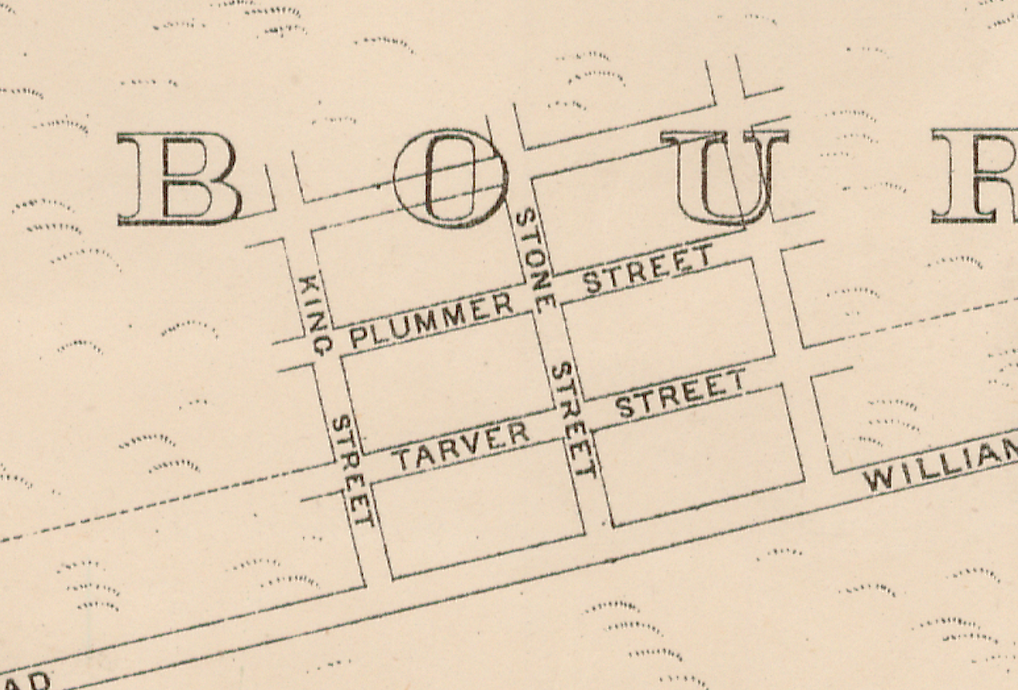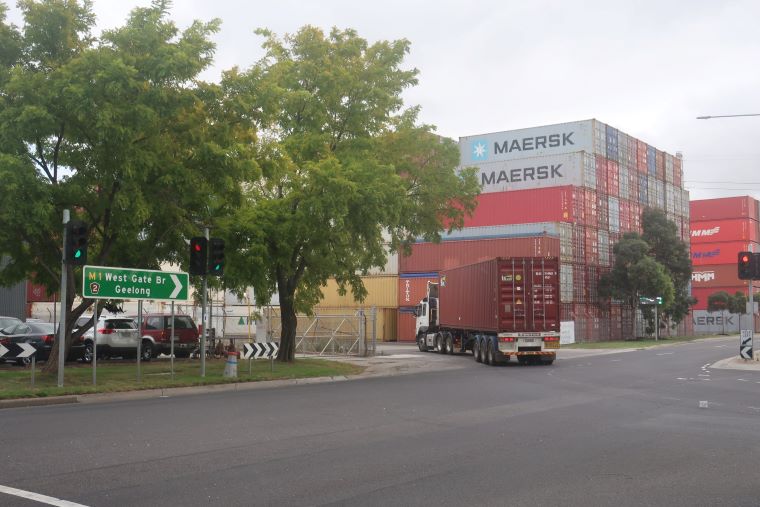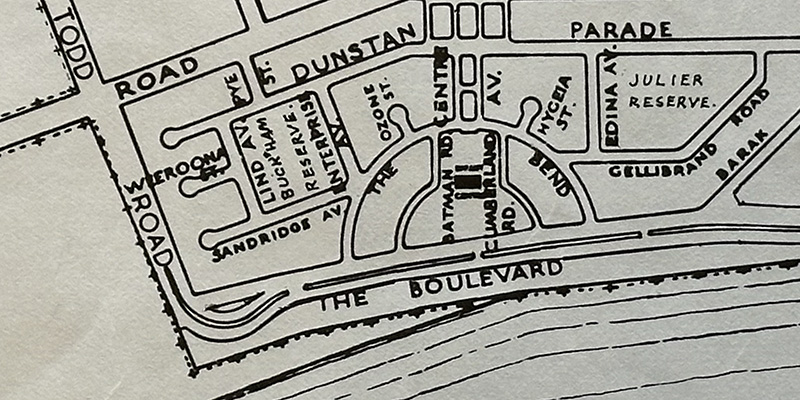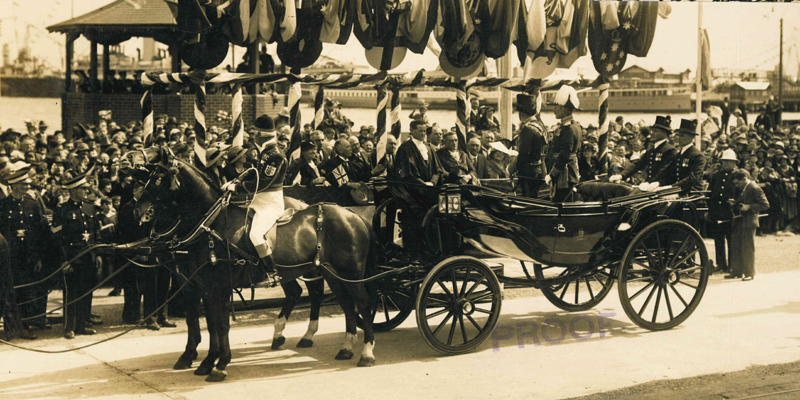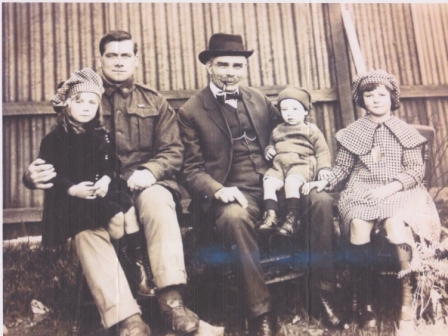Prohasky Street
William Henry Prohasky served on the Port Melbourne Council from August 1885 to September 1893. He was Mayor from 1888 to 1889. His fellow councillors include Frederick Poolman, James Ker Beck Plummer, Henry Norval Edwards, Philip Melville Salmon, John Turnbull, and William Richardson Tarver.
He lived at that time at 73 Evans St on the corner of Farrell St in Gloster House, one of three adjacent houses built by local auctioneer David Armstrong in 1885.
Prohasky was born in Wombat, the early name for Daylesford, in 1856. Although intended for the law, he went into business following the early death of his father. He came to Melbourne as a young man and had a general store in King St and four others in the suburbs.
As Mayor and Justice of the Peace he presided over the Port Melbourne Police Court with fellow councillors. The range of offences that came before the court included, but was not limited to, larceny, being drunk and disorderly, unlawful assault, insulting behaviour, idle and disorderly, and refractory seamen.
After his time on Council, Prohasky slipped out of the record until the appearance of his obituary in 1937. We learn that the 1890s depression affected him severely and that was the reason he withdrew from public life.
He died aged 81 at his home at 602 City Rd, on the corner of Boundary Street, a reminder that the property currently occupied by Pack & Send was once a dwelling. He died with an estate valued at £175. He had savings and a few shares in a mining company but owned no property.
King Street or Prohasky Street?
The street now known as Prohasky Street appears as King Street on a Melbourne Harbor Trust General Plan dating to 1893. The origin of that name is not known but on 18 June 1898, Prohasky Street running 17½ chains in a NW direction from Williamstown Road was officially proclaimed a Public Highway.
Prohasky Street in transition in 2022
Before the rezoning of Fishermans Bend in 2012, Prohasky Street was industrial. It has always had a strong association with the Port and has immediate access to the Westgate Freeway.
Prohasky Street is now in the capital city zoned Wirraway precinct, imagined as a place for families. The P.M. development with frontages to Prohasky, Tarver and Plummer Streets, was completed in September 2020.
Prohasky Street almost aligns with Centre Avenue but is separated from it by several unbroken medians. It is a short but wide street running generally south to north from Williamstown Road to the access to the Westgate freeway. It has generous footpaths and nature strips lined with mature trees: Willow myrtle Agonis flexuosa on the eastern side and a variety of native trees on the western side.
Diagonally opposite the P.M. development is P.M. Containers, an empty container storage facility. It is valuable for port operations to have such a service close to the Port. Access to the facility is strongly regulated by the operator, and trucks book slots to access the yard to avoid queuing on Prohasky Street. The tension between industrial and emerging residential uses is apparent in this location.
Thousand Words Productions and sister company Hitmaker Studios, associated with the production of many well known TV series, are also located in Prohasky Street.
The land currently occupied by Tricab engineered cable solutions on the western side of the street is designated as open space in the Fishermans Bend Framework in the longer term.
PMHPS welcomes further information about William Prohasky.
Sources
1City of Port Phillip collection pm0448.1-3. PMHPS collection catalogue no 3530
City of Port Phillip Heritage Review vol 3, citation 643
History of a Street Precinct, Port Melbourne Historical and Preservation Society
U’Ren, Nancy. and Turnbull, Noel (1983). A History of Port Melbourne, Oxford University Press
‘PUBLIC HIGHWAYS IN THE TOWN OF PORT MELBOURNE’, Victorian Government Gazette, No. 71, 22 July 1898, p. 2849

